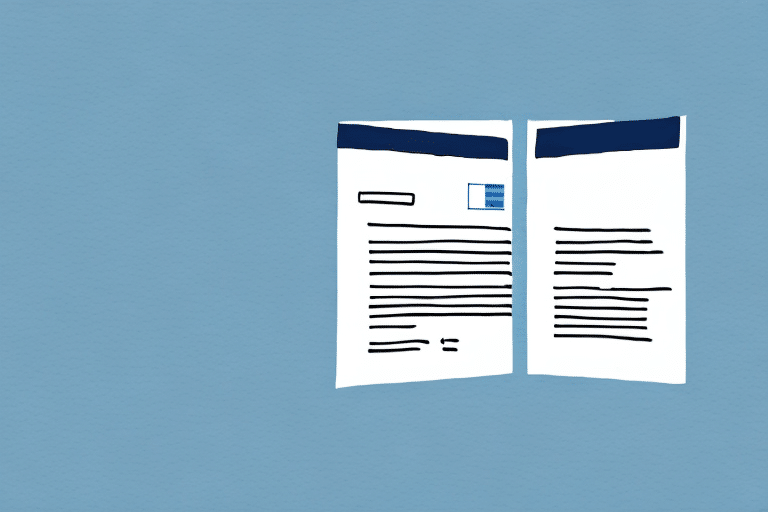Understanding the Bill of Lading
A Bill of Lading (BOL) is a fundamental document in the shipping and logistics industry. It serves as a contract between the shipper and the carrier, outlining the details of the goods being transported. Understanding the BOL is crucial for ensuring smooth transportation, legal compliance, and effective communication between all parties involved.
Purpose and Legal Implications
Purpose of a Bill of Lading
The primary purpose of a Bill of Lading is to provide a detailed record of the shipment. It includes information such as the names of the shipper and consignee, shipping date, destination, and specifics about the goods like quantity, weight, and type. According to the International Chamber of Commerce, the BOL serves as a legal contract that ensures the carrier is responsible for the safe delivery of the goods.
Legal Implications
Legally, the Bill of Lading is a document of title, meaning it represents ownership of the goods. In the event of a dispute, the BOL can be used as evidence in court to demonstrate the terms agreed upon by the shipper and carrier. Non-compliance with the terms outlined in the BOL can lead to legal actions, including claims for damages if goods are lost or damaged during transit.
Additionally, under the Uniform Customs and Practice for Documentary Credits (UCP 600), Bills of Lading must adhere to specific guidelines to be considered valid in international trade transactions.
Types of Bills of Lading
There are several types of Bills of Lading, each serving different purposes:
- Straight Bill of Lading: Used when the shipment has been prepaid and the title is transferred directly to the recipient.
- Order Bill of Lading: Allows the goods to be transferred to a third party, providing flexibility in ownership transfer.
- Bearer Bill of Lading: The holder of the BOL is considered the owner of the goods, similar to a bearer bond.
- Switch Bill of Lading: Utilized when there is a change in the consignee after the initial BOL has been issued.
- Through Bill of Lading: Covers multiple modes of transportation, such as truck, rail, and ship, for a single shipment.
Each type has its unique features and is chosen based on the specific needs of the shipment and the parties involved.
How to Fill Out a Bill of Lading
Step-by-Step Guide
- Shipper and Consignee Information: Enter the full names and addresses of both the shipper and the consignee.
- Description of Goods: Provide a detailed description, including quantity, weight, dimensions, and type of goods.
- Shipping Details: Specify the shipping date, mode of transportation, and destination.
- Freight Information: Include the freight cost, payment terms, and any additional charges.
- Special Instructions: Note any handling instructions or special requirements for the carrier.
- Signatures: Ensure that both the shipper and carrier sign and date the BOL to validate the document.
Common Mistakes to Avoid
- Incomplete or inaccurate descriptions of the goods.
- Incorrect quantities or weights listed.
- Omitting special instructions or handling requirements.
- Signing the document before verifying all information is correct.
Accurate completion of the BOL is essential to prevent delays, additional costs, and legal issues.
Bills of Lading in International Trade
Role and Importance
In international trade, the Bill of Lading is indispensable. It not only serves as a receipt of shipment but also facilitates payment processes, especially under letters of credit. According to the Deloitte Global Trade Management, a properly issued BOL can expedite customs clearance and payment settlements, reducing the risk for both exporters and importers.
Compliance with International Standards
All Bills of Lading used internationally must comply with the UCP 600 guidelines set by the International Chamber of Commerce. Adherence to these standards ensures consistency, legal validity, and recognition across different jurisdictions.
Electronic vs. Paper Bills of Lading
The shipping industry is increasingly adopting Electronic Bills of Lading (eBOL) to enhance efficiency and reduce paperwork. eBOLs offer benefits such as quicker processing times, improved accuracy, and easier storage. A SeaTrade report indicates that the adoption of eBOLs has increased by 30% over the past two years, driven by the need for digital transformation.
However, paper Bills of Lading remain prevalent, especially in regions or industries where digital infrastructure is lacking. Businesses must weigh the advantages and challenges of both formats to determine which best suits their operational needs.
Importance of Accurate Data on a Bill of Lading
Accuracy in the Bill of Lading is paramount. Inaccurate information can lead to shipment delays, increased costs, and potential legal disputes. For instance, incorrect weight or quantity can affect shipping charges and insurance claims. According to the Bureau of Transportation Statistics, data accuracy can reduce logistical errors by up to 25%, enhancing overall supply chain efficiency.
Implementing stringent data verification processes ensures that all information on the BOL is correct, safeguarding against operational disruptions and financial losses.
Terms and Conditions on a Bill of Lading
The terms and conditions outlined in the Bill of Lading form a binding contract between the shipper and the carrier. These terms specify the responsibilities, liabilities, and obligations of each party. It's essential for both shippers and carriers to thoroughly review and understand these terms to ensure compliance and avoid misunderstandings.
Key components typically include:
- Liability Clauses: Define the extent of the carrier's responsibility for lost or damaged goods.
- Force Majeure: Conditions under which the carrier is not liable due to unforeseen events.
- Payment Terms: Details regarding freight charges and payment schedules.
Clear and transparent terms foster strong business relationships and minimize the risk of legal disputes.
Conclusion
The Bill of Lading is a cornerstone document in the shipping and logistics industry, encapsulating essential details of freight shipments and establishing legal bindings between parties. By understanding its purpose, types, legal implications, and the importance of accurate data, businesses can optimize their shipping operations, enhance compliance, and mitigate risks. As the industry evolves with digital advancements like electronic Bills of Lading, staying informed and adaptable is key to maintaining efficient and secure transportation processes.








